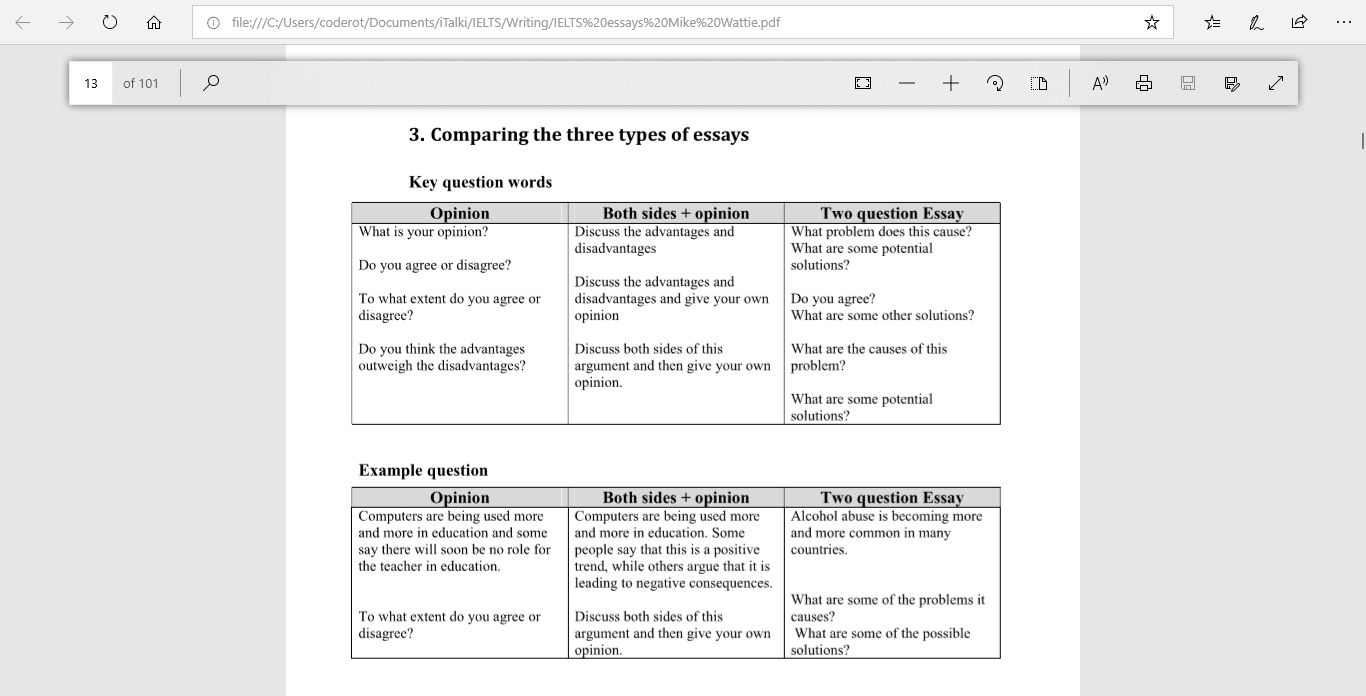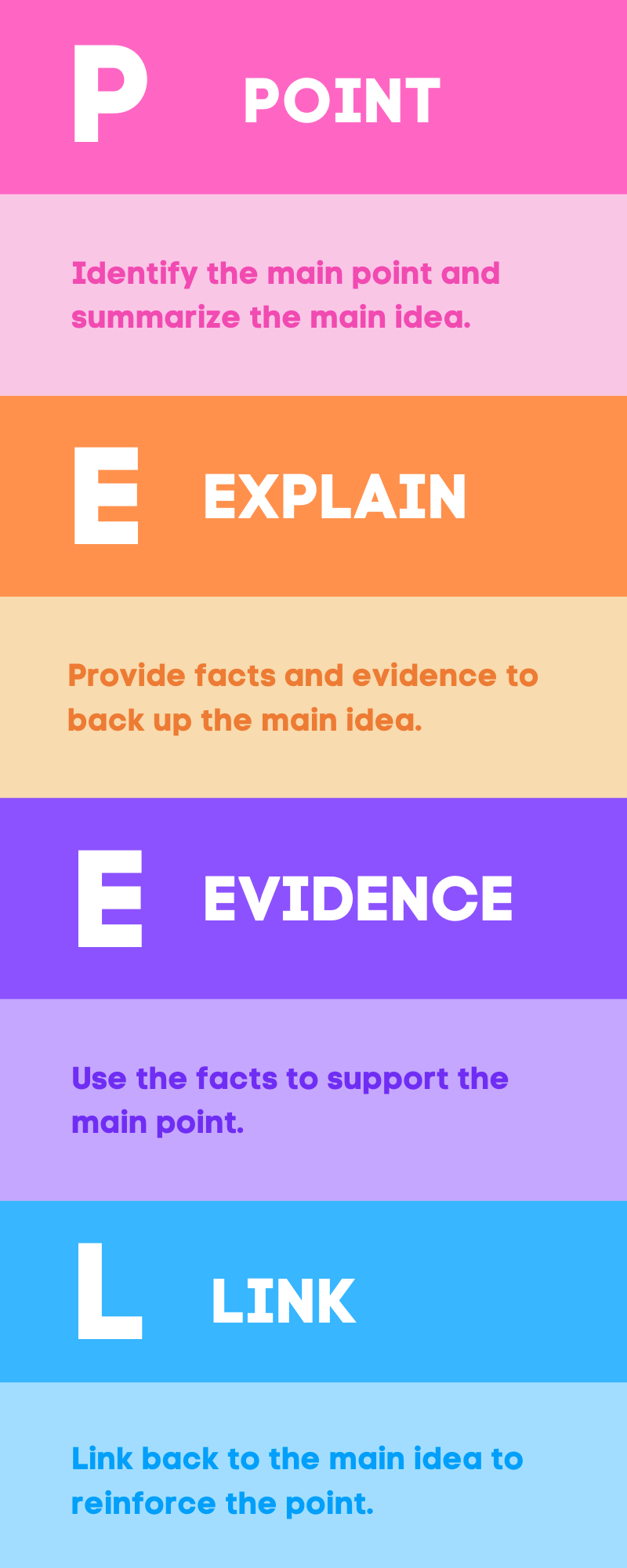
IELTS WRITING TEST
THE IELTS WRITING TEST INVOLVES WRITING EITHER A LETTER AND AN ESSAY (FOR THE GENERAL TEST), OR A REPORT AND AN ESSAY FOR THE ACADEMIC TEST. It is advisable to write slightly more than the minimum number of words for the IELTS writing tasks. This is because some words are not counted, especially if they are flowery, or formulaic. IELTS Liz recommends writing 170-190 words for Task 1, and 270-290 words for Task 2. Be aware that grammar accounts for 25% of your writing score. Common grammatical mistakes include inappropriate tenses and wrong use of articles. Cohesion and Coherence makes up another 25% of your score. Therefore, one should try to link your ideas in a seamless and logical manner. Avoid using sequencing words such as "firstly" and "secondly" because they are too basic. Also avoid having more than three clauses in one sentence (this is overwriting, and is often confusing.) Ideally, sentences should be 8 to 15 words long.Task 1
General Test
IN TASK 1, test-takers are required to write a letter at least 150 words long. You might be asked to write a letter to a newspaper, to recommend someone for an award, or to complain about a neighbourhood problem. According to Mike Wattie, an IELTS letter should contain the following parts: greeting; opening or introduction; body; closing; farewell; and your name. In the introduction of the letter, you need to clearly state the reason for your letter.
In formal letters to a person you don't know, the greeting could comprise of "Dear Sir or Madam" or "To whom it may concern". In informal letters, you can just write the name of the person you are addressing. This could be followed by some friendly opening remarks in an informal letter; while in a formal letter, it is best to get straight down to business. Letters of complaint are generally written in a formal tone. You need to be assertive but not rude.
Academic Test
IF YOU are doing the Academic Test, you will be asked to write a report about a graph or display. The most important thing is that you write a concise overview of the graph, which should follow the introduction. It is more important to talk about general trends, rather than comparing figures. Often, there is a clear and topical trend shown in the graph, such as the increasing percentage of women who have driver's licenses, or the growth of the service industry. A key skill is to select the important information. You should be on the lookout for "time stamps", which show what tense the report must use. Active verbs allow you to say more with less words. Instead of writing "this table shows" you could write, "this table compares the genres of popular independent films." "Compare" means "show" but has extra meaning.That said, it is often necessary to use the passive voice. Thus, "From this graph, it can be seen" looks more academic than "From this graph, I can see..." "In each surveyed year..." Many of my students get caught up in the idea that they need to paraphrase every word in the question. The problem is that many words (such as "computer" do not have true synonyms. It is better to have no paraphrasing than bad paraphrasing (like "thinking machine" in a report about the rise of computers, or changing "job" to "assignment" in a report about employment. "Assignment" means "task", and is not the same thing as your occupation at work )
This story might help you get a feel for the type of reports encountered in IELTS: African Baby Boom. This report predicts the future composition of the world population, highlighting the growth of sub-Saharan Africa.
Task 2
AN ESSAY can be thought of as an extended answer to a question. In IELTS there are three main types of questions asked in the IELTS Writing Test: the opinion question, the discussion question, and the two-part question essay. One of the biggest mistakes you can make is failing to understand the question. You have to become used to the IELTS style of questions. For example, sometimes it is difficult to tell the difference between an advantages/disadvantages essay, and an opinion essay question. Generally, if the questions says: "To what extent do you agree or disagree..." this makes it an opinion essay! In an opinion essay, it is not necessary to use the phrase "some people believe that...", because this is about your opinion. On the other hand, it is vital to make your opinion clear... as early as possible, and as often as possible! The stronger your opinion, the better. Some test-takers have trouble getting ideas for their essays.
In a discussion essay, you need to discuss both sides of an argument, and then decide which side you agree with. An example of this type of question is: "Some people think that the teenage years are the happiest times of most people's lives. Others think that adult life brings more happiness, in spite of greater responsibilities. Discuss both these views and give your own opinion." In his essay, he argued that younger members of society were happier than older people. This struck me as slightly off-topic... instead of comparing groups of people, he should be comparing different periods of a person's individual life. You should, however, state your opinion briefly in the introduction. This may be a problem for East Asian students, who are not used to being forthright.
THE INTRODUCTION
It is necessary to paraphrase the question in the introduction of an essay. Bear in mind that this can be difficult even for native speakers. One solution is to the turn the verbs into nouns, and nouns into verbs. Many students find they feel stuck when writing the introduction. For that reason, it can be good to have some stock phrases in your mind to use in every essay. Some templates for the introduction include:TOPIC PARAGRAPHS
The topic paragraphs are the body of an essay; they are where you present your argument. In an opinion essay, you should devote one paragraph to giving one reason for your opinion, and one paragraph for your second reason (you don't necessarily have to present counter-arguments or anti-theses in this type of essay, although some sites recommend it.) In a two-question type essay, you should answer each question in one of the body paragraphs. It is necessary to write clearly defined paragraphs to do well in this test. Topic paragraphs should use the PEEL (Point Sentence; Explanation; Example; Link) outline. This systematically addresses the four criteria of the scoring outline (Cohesion and Coherence, Task Accomplishment, etc). Use well-known facts in your example, and make your point sentences clear and obvious. The link is like a conclusion which also connects to the entire thrust of your essay.
CONCLUSION
Some opening line templates include:Avoid overwriting and stuffing your writing with flowery phrases: "Finally, and to draw this essay to a close..." doesn't convey any more additional information.
RECOMMENDED WEBSITES & WEBLOGS
IELTS Portal (Russian)
IELTS Practice Tests
» Test Big (Robot Assessment)



No files in directory to display. Can't open random/copyright
No files in directory to display. Can't open random/donations
No files in directory to display.